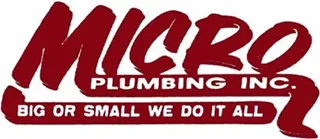
The Evolution of Water Lines, Pipe Repair, & Replacement in Omaha
The human body is made up of 60% water. This must be why it is recommended to consume a gallon of water per day per person. Water is so important in our lives that we use about 100 gallons of water per day per person just for our basic needs. Items like bathing, showering, laundry, flushing toilets, washing clothes and dishes, and personal hygiene like brushing our teeth and washing our face. This does not even include the many uses for business, like making our coffee, washing our cars, medical, firefighting, factories and so many more.
Water Distribution: From Source to Tap
So how does water get to us? In history, it may have been by hollowed-out trees, bamboo, and even clay. Today we have more modern piping. It typically starts with our local municipality, who processes the water and sends it throughout the city through a series of pipes called distribution water lines. In Omaha or any other town or city, these main water lines run to our homes and businesses mostly in ductile iron pipes due to their size and strength. Once it gets to the home and businesses, the plumber takes over and runs an individual supply line to the property. In cities and towns that were at least over a hundred years old, like Omaha, these water lines may have been made out of lead or copper. Lead is slowly being replaced in older homes by copper. Once it gets inside the property the type of material can vary depending on the usage.
Varieties of Pipe Materials
In commercial buildings, you will see fire lines that are distributed by either steel or plastic lines in some applications. Water for the domestic side is most often done in copper. This may be due to local fire codes and building conditions as copper will hold up better in these conditions.
Residential homes and apartments in Omaha also have water supply lines that can vary in the type of material used. Older homes (mid-1960s and older) and apartments may have used galvanized lines to supply the water. They were considered strong and durable at the time, however over time they deteriorated and either leaked or became so clogged, that water slowed to a trickle in most faucets. This is when the plumber will need to replace it, most often with copper.
Evolution of Pipe Materials
Copper water lines have been around for thousands of years yet cost and supply have been key factors in their usage. You may see a home built 100 years ago that has copper supplying water throughout the home. However, it was not until the mid-1960s that cost and supply made it the mainstay for most commercial and residential properties. With copper now in greater demand in other areas, like electrical, computers, industrial, and manufacturing components, residential contractors and plumbers have switched to more cost-effective materials.
Two materials that have become more relevant in recent years are PEX and CPVC. PEX piping would be recognizable by its flexible nature. It has been used for many years in other applications like in floor heating. It is a desired material because it is easy to install, and long runs can be made without fittings and joints that could leak over time. CPVC has also been around for some time in other applications but has made its way into residential homes and apartments due to its cost. CPVC is a form of plastic pipe and is more yellow in color than standard PVC you may see on other parts of the plumbing system.
Expert Pipe Repair & Replacement in Omaha
Micro Plumbing is familiar with all these types of pipes and more, so if you are looking to repair, replace, or install new pipes in your home or business, call us to determine whether copper, PEX, CPVC, or some other material is best for your home and your business.
Big or Small we do it all, from a ¼” refrigerator line to a 4” ductile iron water line or anything in between.
